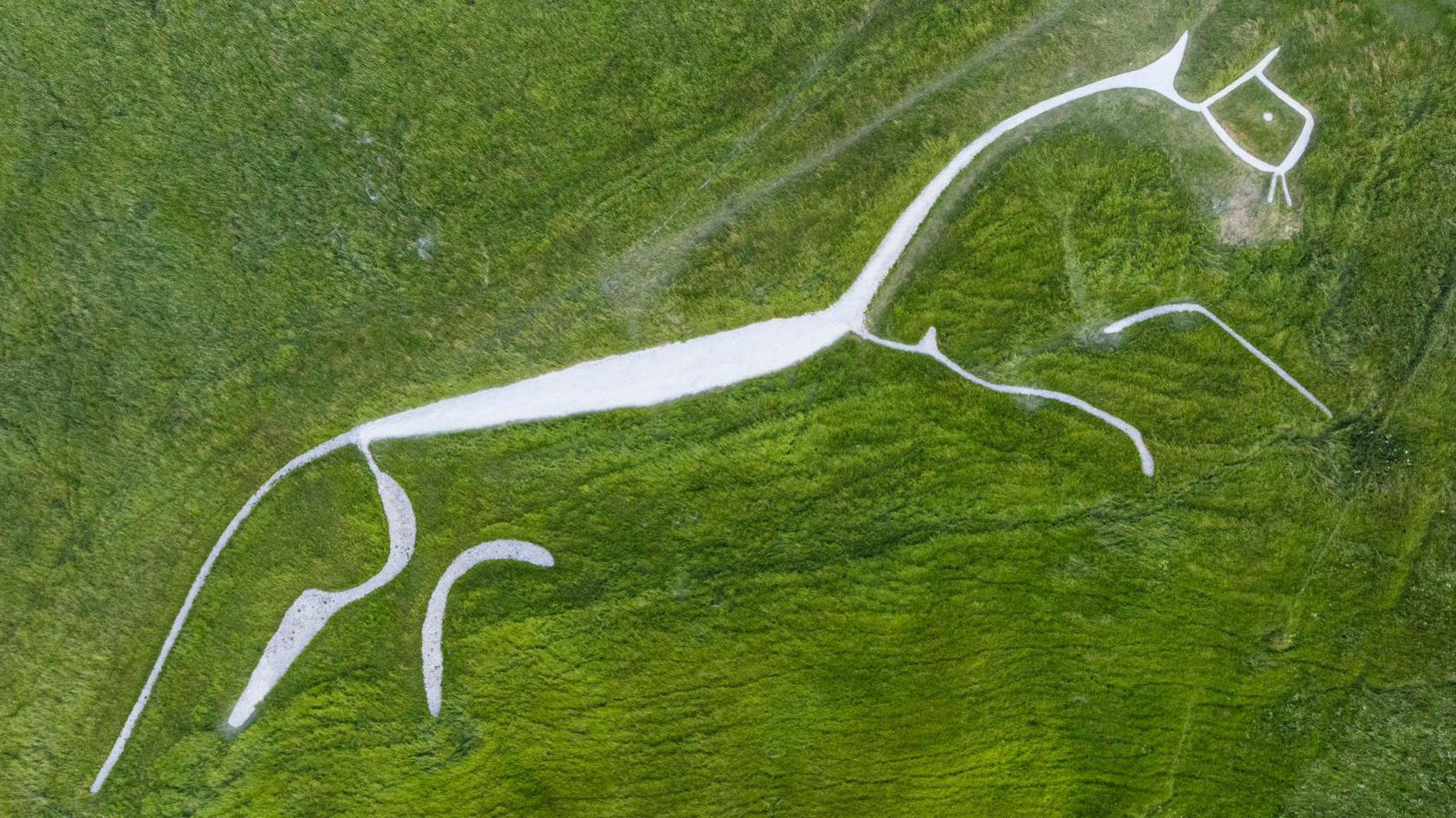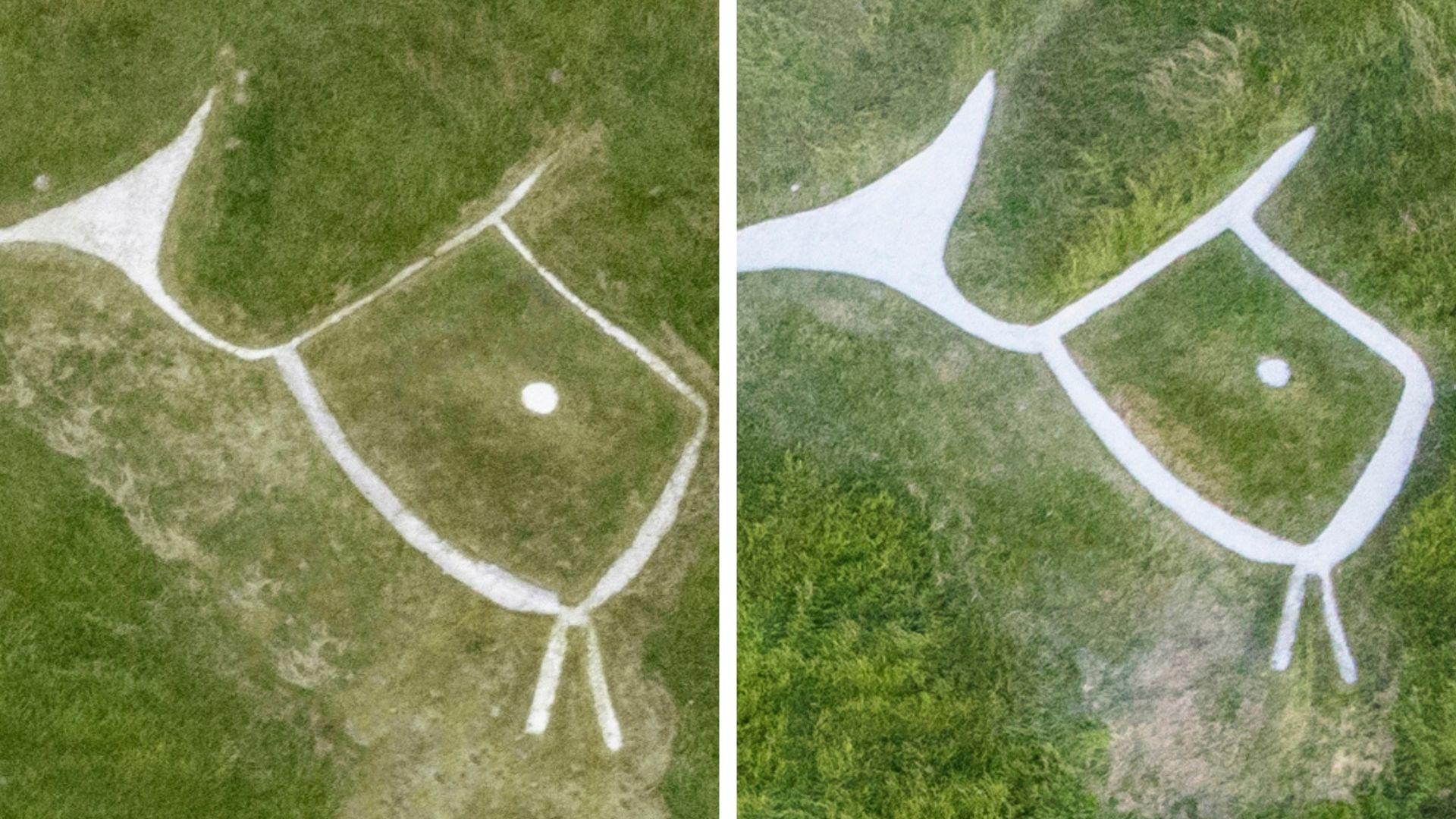Iconic chalk figure restored to former glory

The figure dates back to the Bronze Age
- Published
An iconic prehistoric chalk figure - believed to be Britain's oldest - has been restored after archaeologists discovered it had been shrinking.
Work last year revealed the neck and head of the 3,000-year-old Uffington White Horse in Oxfordshire had narrowed to less than half of its typical size.
Archaeologists from the National Trust and Oxford Archaeology have restored the 364ft-long (111m) horse by carefully cutting any encroaching turf back to the estimated original edge.
Some of the top layer of chalk on the figure has also been redistributed.
National Trust archaeologist Adrian Cox said the figure was "hugely important" but also intriguing as "we don't know for certain its original purpose".

The neck and head of the figure was found to have shrunk
"What we do know is that through the efforts of generations of local people, the horse has been cared for, allowing it to survive for thousands of years to become an iconic feature of this landscape," he added.
Oxford Archaeology project manager Mark Dodd said it had been a "huge privilege" to work on such an "iconic landmark".
During the work, soil samples from the lowest layers of the figure were taken to see if scientists could accurately date its creation.
Previous samples taken in the 1990s revealed the horse to be Britain's oldest chalk figure.
But techniques to date archaeological remains have improved, meaning the date could be further refined, the archaeology team said.
"Now the hard work is done, and we can see elements of the monument restored to its former glory, we will be eagerly awaiting the results of research to see what new information this will bring to light," Mr Dodd said.
What is the Uffington White Horse?
It is believed to have been created between 1740 and 210 BC
Its purpose remains unknown, with some suggesting it may have been a territorial marker or a fertility symbol
Some believe the figure may instead represent a dragon, potentially connecting it to the legend of Dragon Hill (which lies directly below the White Horse) where Saint George is said to have slain a dragon
The site is located beside the Ridgeway - the ancient route that stretches from Dorset to the Wash in Lincolnshire and Norfolk
Source: English Heritage
Follow BBC South on Facebook, external, X (Twitter), external, or Instagram, external. Send your story ideas to south.newsonline@bbc.co.uk, external or via WhatsApp on 0808 100 2240, external.
Related topics
- Published2 August 2023

- Published4 May 2014